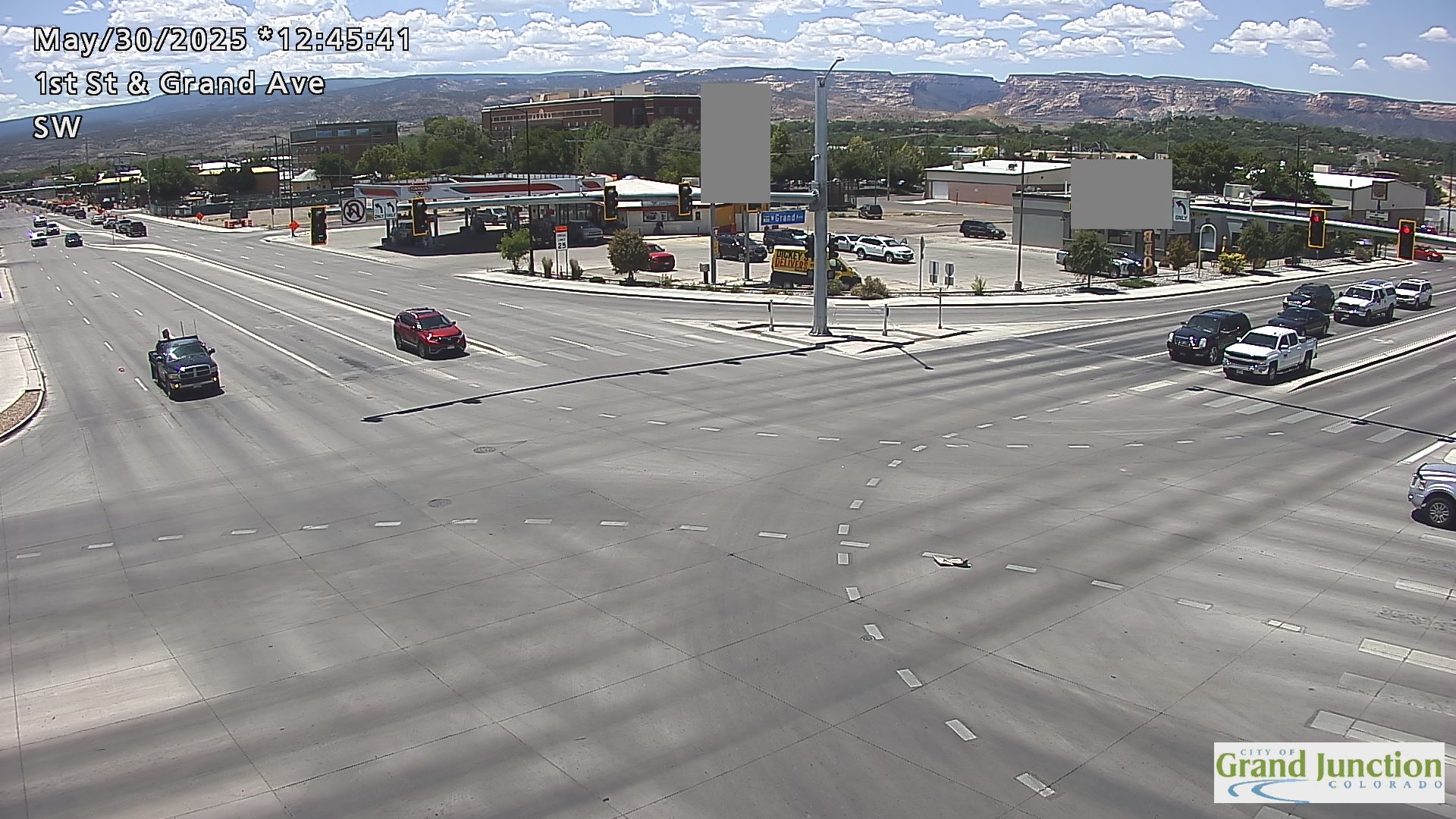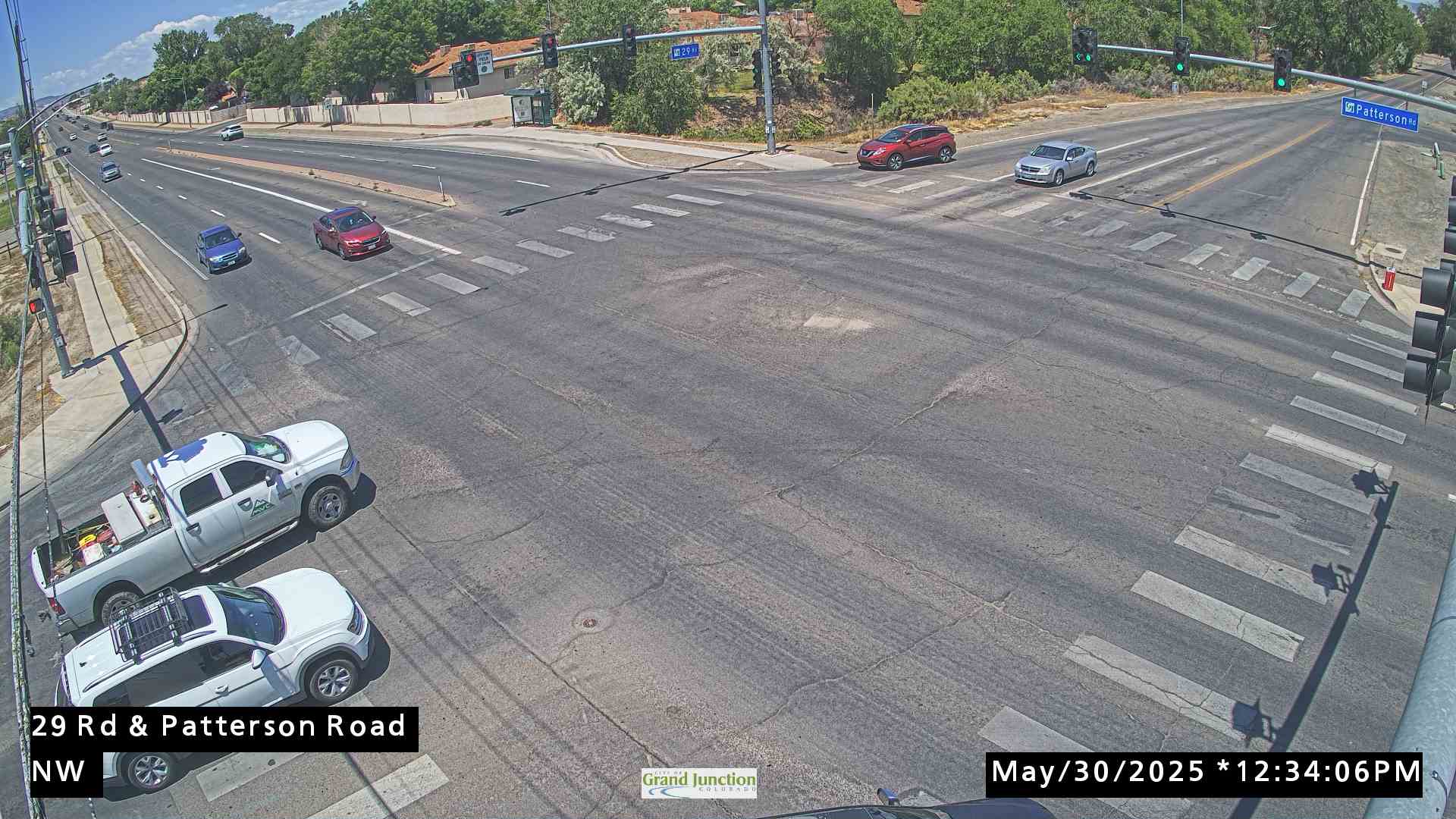Grand Junction, CO Weather Cams
Grand Junction Tower Cam
Grand Junction Regional Airport
Colorado National Monument

Grand Junction 1st and Grand Ave North Cam

Grand Junction 29th ST & PATTERSON RD Cam

Grand Junction, Colorado: Where Rivers Meet and the West Endures
Grand Junction, Colorado Weather Cams. At the confluence of the Colorado and Gunnison Rivers lies Grand Junction, a city whose name reflects both its geography and its role as a crossroads of cultures, commerce, and landscapes. As the largest city on Colorado’s Western Slope, Grand Junction has long served as a hub for agriculture, transportation, and energy—while also evolving into a center for education, recreation, and viticulture. Its story is one of transformation, resilience, and the enduring pull of the Grand Valley.
Ancient Landscapes and Indigenous Roots
The Grand Valley, stretching roughly 30 miles east to west, has been inhabited for thousands of years. Paleo-Indians, followed by the Fremont and Ute peoples, hunted game and gathered plants in the fertile lowlands and surrounding mesas. The Ute, in particular, made the valley their home for centuries, drawn by its relatively mild winters and abundant resources.
By the mid-19th century, however, increasing pressure from settlers and the U.S. government led to the forced removal of the Ute people. Following the Meeker Massacre in 1879 and subsequent treaties, the Utes were relocated to reservations in Utah, opening the Grand Valley to white settlement.
Founding and Early Development
In 1881, just weeks after the Utes were removed, Civil War veteran and town builder George Addison Crawford founded Grand Junction. The name was chosen to reflect the meeting of the Grand (now Colorado) and Gunnison Rivers. Crawford and his partners quickly laid out irrigation ditches, enabling agriculture to flourish in the arid valley.
The town was incorporated in 1882, and by the end of that year, the Denver & Rio Grande Railroad had arrived, linking Grand Junction to Pueblo and beyond. This connection transformed the fledgling settlement into a vital shipping and supply center for the Western Slope.
Agriculture and the Birth of Colorado’s Fruit Belt
With irrigation in place and a long growing season, the Grand Valley became one of Colorado’s most productive agricultural regions. By the 1890s, orchards of apples, pears, cherries, and especially peaches blanketed the valley floor. The town of Palisade, just east of Grand Junction, became synonymous with high-quality fruit, and the region earned the nickname “Colorado’s Fruit Belt.”
In 1884, Elam Blain harvested the valley’s first commercial fruit crop, and by the early 20th century, Grand Junction was a major shipping point for produce bound for markets across the West. The annual Palisade Peach Festival, still celebrated today, honors this agricultural legacy.
Mining, Energy, and Industrial Growth
While agriculture remained central, Grand Junction also played a key role in Colorado’s mining and energy sectors. In the early 20th century, coal mining and oil shale exploration brought waves of workers and investment. During World War II and the Cold War, the city became a processing center for uranium mined across the Colorado Plateau, fueling the nation’s nuclear ambitions.
The uranium boom brought prosperity but also environmental challenges. By the 1970s, concerns over radioactive tailings led to federal cleanup efforts, and the city began to diversify its economy.
Education and Civic Identity
Grand Junction’s growth was accompanied by a commitment to education and civic development. In 1925, the city established what would become Colorado Mesa University, now a thriving institution with over 10,000 students. The university has helped shape Grand Junction into a regional center for healthcare, research, and the arts.
The city also invested in cultural institutions, including the Museum of the West, the Avalon Theatre, and the Western Colorado Botanical Gardens. These venues celebrate the region’s history, geology, and artistic spirit.
Natural Wonders and Outdoor Recreation
Surrounded by dramatic landscapes, Grand Junction is a gateway to some of Colorado’s most iconic natural features. To the west lies the Colorado National Monument, a stunning expanse of red rock canyons and monoliths that rivals any national park. To the east, the Grand Mesa—the world’s largest flat-topped mountain—offers forests, lakes, and year-round recreation.
The Book Cliffs rise to the north, while the Uncompahgre Plateau stretches to the south. This convergence of ecosystems makes the area a haven for hikers, mountain bikers, climbers, and river rafters. The Kokopelli Trail, which begins near Fruita, connects Grand Junction to Moab, Utah, and is a favorite among mountain biking enthusiasts.
Wine Country and Culinary Renaissance
In recent decades, Grand Junction has embraced a new identity as the heart of Colorado Wine Country. The valley’s warm days, cool nights, and mineral-rich soils have proven ideal for grape cultivation. Dozens of wineries now dot the landscape, producing award-winning varietals and drawing tourists to tasting rooms and vineyard tours.
This viticultural boom has spurred a broader culinary renaissance, with farm-to-table restaurants, craft breweries, and farmers markets showcasing the region’s bounty.
Modern Challenges and Community Spirit
Like many Western towns, Grand Junction has faced economic fluctuations, housing pressures, and debates over land use. Yet it has responded with characteristic resilience. Downtown revitalization efforts have transformed Main Street into a vibrant corridor of shops, galleries, and public art. Community initiatives have expanded access to parks, trails, and open space.
The city’s population, now over 65,000, continues to grow, fueled by its appeal to retirees, remote workers, and outdoor enthusiasts. As the anchor of the Grand Junction metropolitan area—home to more than 150,000 residents—it remains the cultural and economic heart of western Colorado.
Conclusion: A City at the Crossroads
Grand Junction’s name is more than a geographic descriptor—it’s a metaphor for the city’s role as a meeting place of rivers, cultures, and ideas. From Indigenous homelands to pioneer farms, from uranium mills to university campuses, the city has continually reinvented itself while honoring its roots.
Today, Grand Junction stands as a testament to the enduring spirit of the American West: adaptive, independent, and deeply connected to the land. Whether sipping wine in a Palisade vineyard, hiking the Monument’s rim, or watching the sun set over the Grand Mesa, one can feel the quiet power of a place where history and horizon meet.
For more information, visit the Grand Junction, Colorado official website.
